Sijie Ruan
A Game-Theoretic Spatio-Temporal Reinforcement Learning Framework for Collaborative Public Resource Allocation
Oct 30, 2025Abstract:Public resource allocation involves the efficient distribution of resources, including urban infrastructure, energy, and transportation, to effectively meet societal demands. However, existing methods focus on optimizing the movement of individual resources independently, without considering their capacity constraints. To address this limitation, we propose a novel and more practical problem: Collaborative Public Resource Allocation (CPRA), which explicitly incorporates capacity constraints and spatio-temporal dynamics in real-world scenarios. We propose a new framework called Game-Theoretic Spatio-Temporal Reinforcement Learning (GSTRL) for solving CPRA. Our contributions are twofold: 1) We formulate the CPRA problem as a potential game and demonstrate that there is no gap between the potential function and the optimal target, laying a solid theoretical foundation for approximating the Nash equilibrium of this NP-hard problem; and 2) Our designed GSTRL framework effectively captures the spatio-temporal dynamics of the overall system. We evaluate GSTRL on two real-world datasets, where experiments show its superior performance. Our source codes are available in the supplementary materials.
A Gravity-informed Spatiotemporal Transformer for Human Activity Intensity Prediction
Jun 16, 2025Abstract:Human activity intensity prediction is a crucial to many location-based services. Although tremendous progress has been made to model dynamic spatiotemporal patterns of human activity, most existing methods, including spatiotemporal graph neural networks (ST-GNNs), overlook physical constraints of spatial interactions and the over-smoothing phenomenon in spatial correlation modeling. To address these limitations, this work proposes a physics-informed deep learning framework, namely Gravity-informed Spatiotemporal Transformer (Gravityformer) by refining transformer attention to integrate the universal law of gravitation and explicitly incorporating constraints from spatial interactions. Specifically, it (1) estimates two spatially explicit mass parameters based on inflow and outflow, (2) models the likelihood of cross-unit interaction using closed-form solutions of spatial interactions to constrain spatial modeling randomness, and (3) utilizes the learned spatial interaction to guide and mitigate the over-smoothing phenomenon in transformer attention matrices. The underlying law of human activity can be explicitly modeled by the proposed adaptive gravity model. Moreover, a parallel spatiotemporal graph convolution transformer structure is proposed for achieving a balance between coupled spatial and temporal learning. Systematic experiments on six real-world large-scale activity datasets demonstrate the quantitative and qualitative superiority of our approach over state-of-the-art benchmarks. Additionally, the learned gravity attention matrix can be disentangled and interpreted based on geographical laws. This work provides a novel insight into integrating physical laws with deep learning for spatiotemporal predictive learning.
DWCL: Dual-Weighted Contrastive Learning for Multi-View Clustering
Nov 26, 2024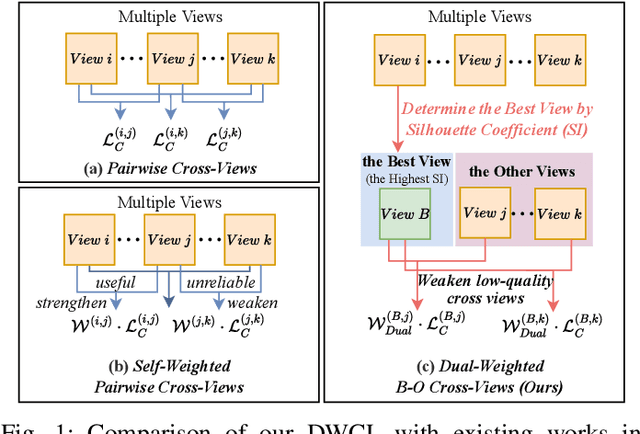
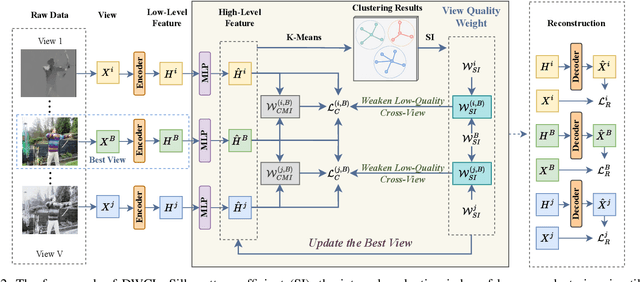
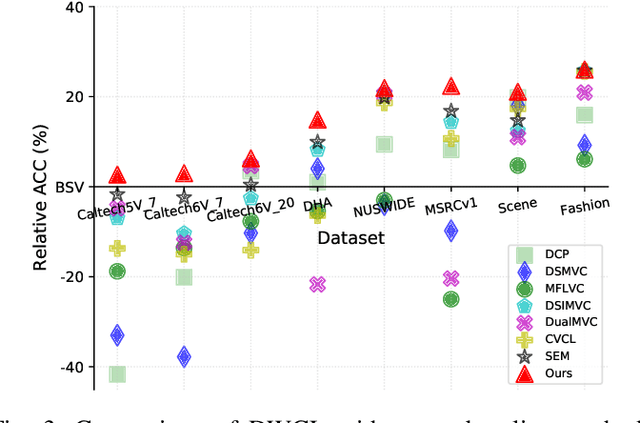

Abstract:Multi-view contrastive clustering (MVCC) has gained significant attention for generating consistent clustering structures from multiple views through contrastive learning. However, most existing MVCC methods create cross-views by combining any two views, leading to a high volume of unreliable pairs. Furthermore, these approaches often overlook discrepancies in multi-view representations, resulting in representation degeneration. To address these challenges, we introduce a novel model called Dual-Weighted Contrastive Learning (DWCL) for Multi-View Clustering. Specifically, to reduce the impact of unreliable cross-views, we introduce an innovative Best-Other (B-O) contrastive mechanism that enhances the representation of individual views at a low computational cost. Furthermore, we develop a dual weighting strategy that combines a view quality weight, reflecting the quality of each view, with a view discrepancy weight. This approach effectively mitigates representation degeneration by downplaying cross-views that are both low in quality and high in discrepancy. We theoretically validate the efficiency of the B-O contrastive mechanism and the effectiveness of the dual weighting strategy. Extensive experiments demonstrate that DWCL outperforms previous methods across eight multi-view datasets, showcasing superior performance and robustness in MVCC. Specifically, our method achieves absolute accuracy improvements of 5.4\% and 5.6\% compared to state-of-the-art methods on the Caltech6V7 and MSRCv1 datasets, respectively.
TwinS: Revisiting Non-Stationarity in Multivariate Time Series Forecasting
Jun 06, 2024Abstract:Recently, multivariate time series forecasting tasks have garnered increasing attention due to their significant practical applications, leading to the emergence of various deep forecasting models. However, real-world time series exhibit pronounced non-stationary distribution characteristics. These characteristics are not solely limited to time-varying statistical properties highlighted by non-stationary Transformer but also encompass three key aspects: nested periodicity, absence of periodic distributions, and hysteresis among time variables. In this paper, we begin by validating this theory through wavelet analysis and propose the Transformer-based TwinS model, which consists of three modules to address the non-stationary periodic distributions: Wavelet Convolution, Period-Aware Attention, and Channel-Temporal Mixed MLP. Specifically, The Wavelet Convolution models nested periods by scaling the convolution kernel size like wavelet transform. The Period-Aware Attention guides attention computation by generating period relevance scores through a convolutional sub-network. The Channel-Temporal Mixed MLP captures the overall relationships between time series through channel-time mixing learning. TwinS achieves SOTA performance compared to mainstream TS models, with a maximum improvement in MSE of 25.8\% over PatchTST.
Towards Robust Trajectory Representations: Isolating Environmental Confounders with Causal Learning
Apr 22, 2024



Abstract:Trajectory modeling refers to characterizing human movement behavior, serving as a pivotal step in understanding mobility patterns. Nevertheless, existing studies typically ignore the confounding effects of geospatial context, leading to the acquisition of spurious correlations and limited generalization capabilities. To bridge this gap, we initially formulate a Structural Causal Model (SCM) to decipher the trajectory representation learning process from a causal perspective. Building upon the SCM, we further present a Trajectory modeling framework (TrajCL) based on Causal Learning, which leverages the backdoor adjustment theory as an intervention tool to eliminate the spurious correlations between geospatial context and trajectories. Extensive experiments on two real-world datasets verify that TrajCL markedly enhances performance in trajectory classification tasks while showcasing superior generalization and interpretability.
KITS: Inductive Spatio-Temporal Kriging with Increment Training Strategy
Nov 05, 2023



Abstract:Sensors are commonly deployed to perceive the environment. However, due to the high cost, sensors are usually sparsely deployed. Kriging is the tailored task to infer the unobserved nodes (without sensors) using the observed source nodes (with sensors). The essence of kriging task is transferability. Recently, several inductive spatio-temporal kriging methods have been proposed based on graph neural networks, being trained based on a graph built on top of observed nodes via pretext tasks such as masking nodes out and reconstructing them. However, the graph in training is inevitably much sparser than the graph in inference that includes all the observed and unobserved nodes. The learned pattern cannot be well generalized for inference, denoted as graph gap. To address this issue, we first present a novel Increment training strategy: instead of masking nodes (and reconstructing them), we add virtual nodes into the training graph so as to mitigate the graph gap issue naturally. Nevertheless, the empty-shell virtual nodes without labels could have bad-learned features and lack supervision signals. To solve these issues, we pair each virtual node with its most similar observed node and fuse their features together; to enhance the supervision signal, we construct reliable pseudo labels for virtual nodes. As a result, the learned pattern of virtual nodes could be safely transferred to real unobserved nodes for reliable kriging. We name our new Kriging model with Increment Training Strategy as KITS. Extensive experiments demonstrate that KITS consistently outperforms existing kriging methods by large margins, e.g., the improvement over MAE score could be as high as 18.33%.
POI Alias Discovery in Delivery Addresses using User Locations
Sep 20, 2021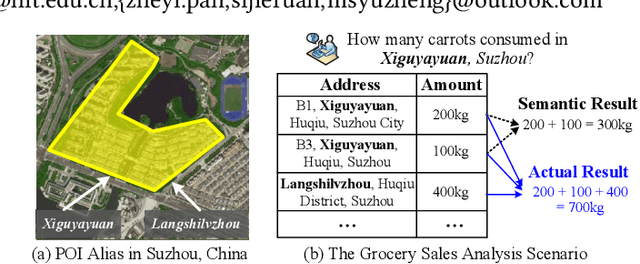
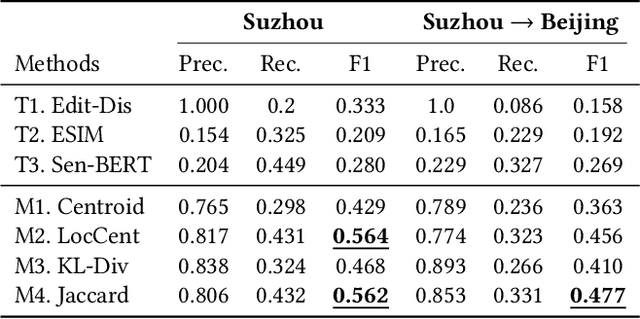
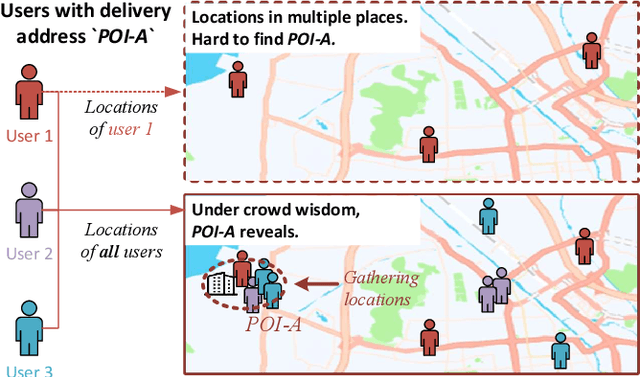
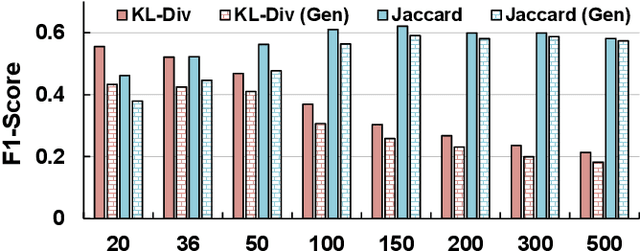
Abstract:People often refer to a place of interest (POI) by an alias. In e-commerce scenarios, the POI alias problem affects the quality of the delivery address of online orders, bringing substantial challenges to intelligent logistics systems and market decision-making. Labeling the aliases of POIs involves heavy human labor, which is inefficient and expensive. Inspired by the observation that the users' GPS locations are highly related to their delivery address, we propose a ubiquitous alias discovery framework. Firstly, for each POI name in delivery addresses, the location data of its associated users, namely Mobility Profile are extracted. Then, we identify the alias relationship by modeling the similarity of mobility profiles. Comprehensive experiments on the large-scale location data and delivery address data from JD logistics validate the effectiveness.
Fine-Grained Urban Flow Inference
Feb 05, 2020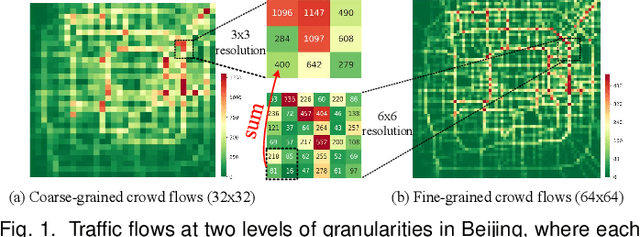
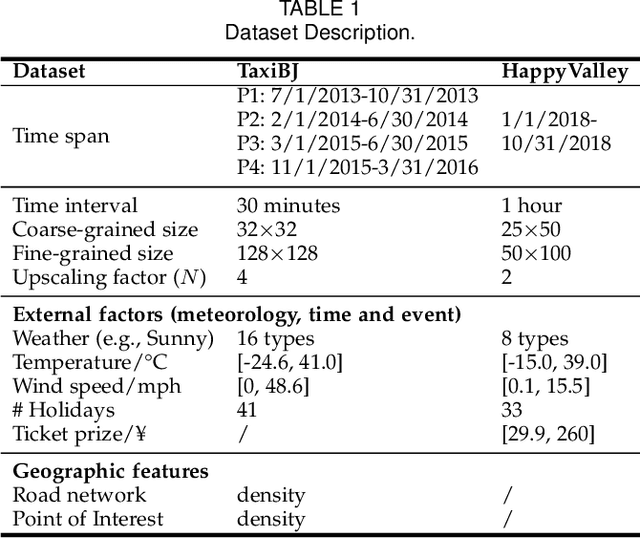
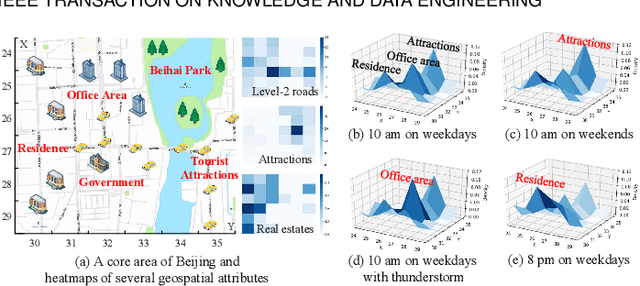
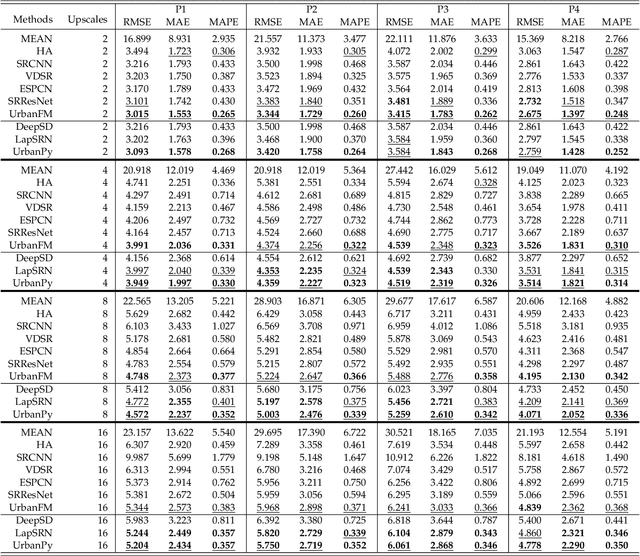
Abstract:The ubiquitous deployment of monitoring devices in urban flow monitoring systems induces a significant cost for maintenance and operation. A technique is required to reduce the number of deployed devices, while preventing the degeneration of data accuracy and granularity. In this paper, we present an approach for inferring the real-time and fine-grained crowd flows throughout a city based on coarse-grained observations. This task exhibits two challenges: the spatial correlations between coarse- and fine-grained urban flows, and the complexities of external impacts. To tackle these issues, we develop a model entitled UrbanFM which consists of two major parts: 1) an inference network to generate fine-grained flow distributions from coarse-grained inputs that uses a feature extraction module and a novel distributional upsampling module; 2) a general fusion subnet to further boost the performance by considering the influence of different external factors. This structure provides outstanding effectiveness and efficiency for small scale upsampling. However, the single-pass upsampling used by UrbanFM is insufficient at higher upscaling rates. Therefore, we further present UrbanPy, a cascading model for progressive inference of fine-grained urban flows by decomposing the original tasks into multiple subtasks. Compared to UrbanFM, such an enhanced structure demonstrates favorable performance for larger-scale inference tasks.
UrbanFM: Inferring Fine-Grained Urban Flows
Feb 06, 2019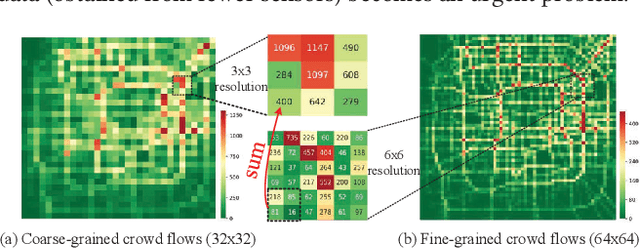
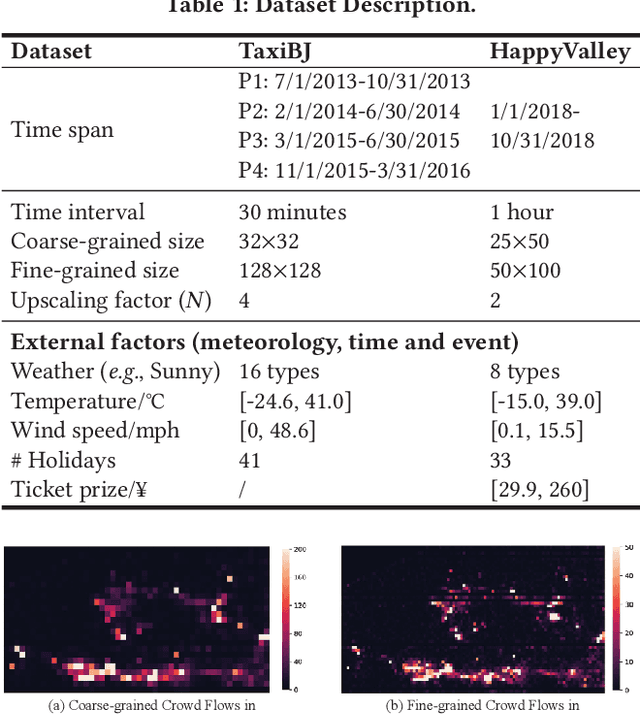
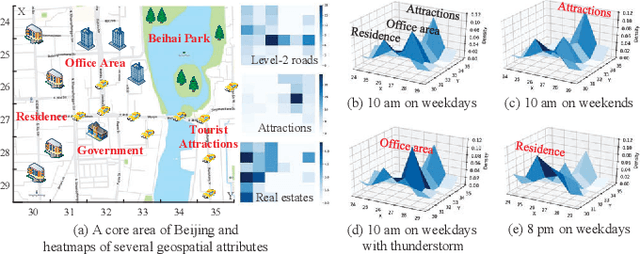

Abstract:Urban flow monitoring systems play important roles in smart city efforts around the world. However, the ubiquitous deployment of monitoring devices, such as CCTVs, induces a long-lasting and enormous cost for maintenance and operation. This suggests the need for a technology that can reduce the number of deployed devices, while preventing the degeneration of data accuracy and granularity. In this paper, we aim to infer the real-time and fine-grained crowd flows throughout a city based on coarse-grained observations. This task is challenging due to two reasons: the spatial correlations between coarse- and fine-grained urban flows, and the complexities of external impacts. To tackle these issues, we develop a method entitled UrbanFM based on deep neural networks. Our model consists of two major parts: 1) an inference network to generate fine-grained flow distributions from coarse-grained inputs by using a feature extraction module and a novel distributional upsampling module; 2) a general fusion subnet to further boost the performance by considering the influences of different external factors. Extensive experiments on two real-world datasets, namely TaxiBJ and HappyValley, validate the effectiveness and efficiency of our method compared to seven baselines, demonstrating the state-of-the-art performance of our approach on the fine-grained urban flow inference problem.
 Add to Chrome
Add to Chrome Add to Firefox
Add to Firefox Add to Edge
Add to Edge